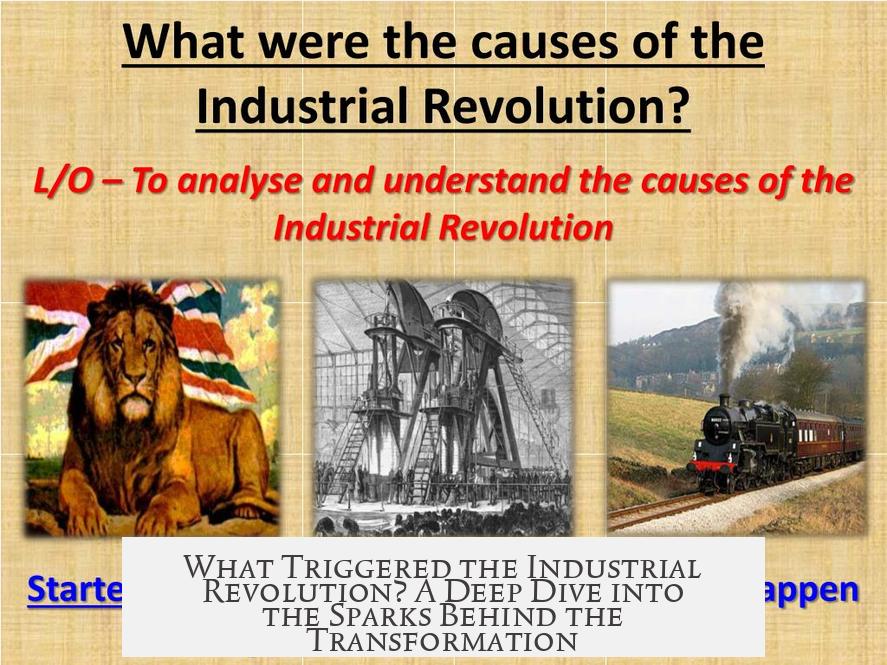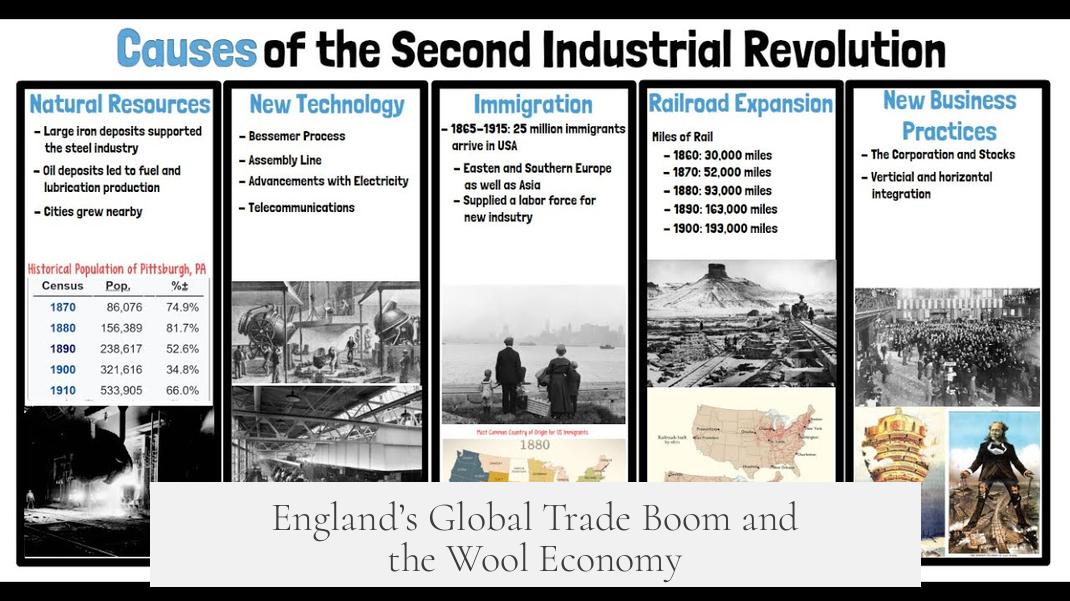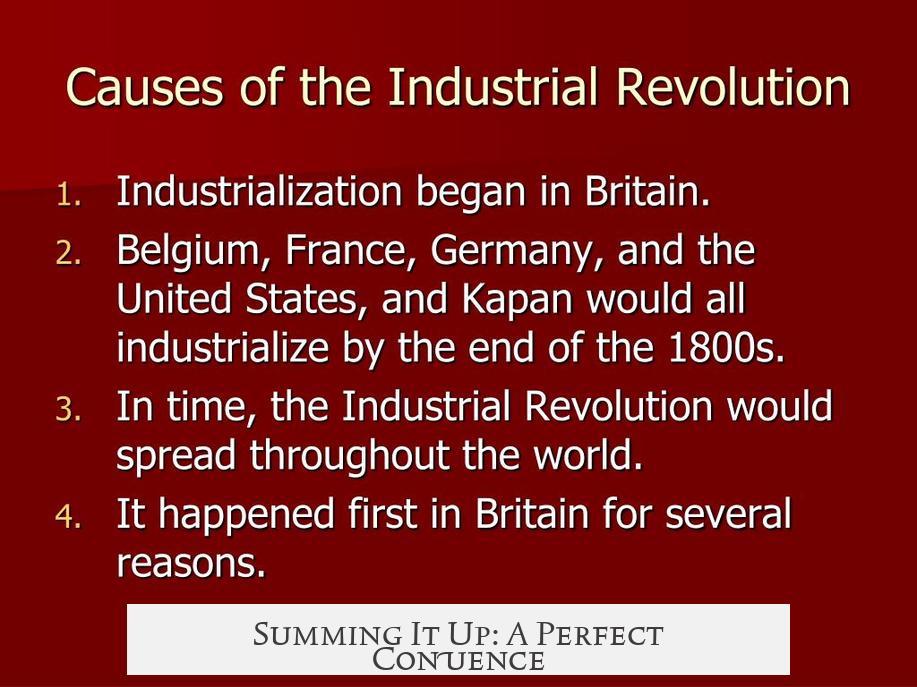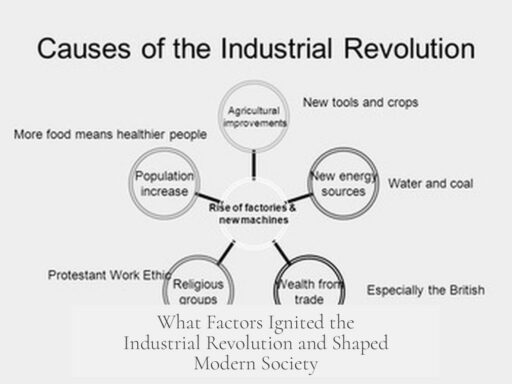The Industrial Revolution was triggered by a combination of social, economic, technological, and legal changes in 18th-century England. Among the most significant drivers was the English Enclosure Movement, which reshaped agriculture and labor patterns, setting the stage for industrial growth. This transformation, together with advancements in trade, transportation, intellectual property rights, and mechanization, created the conditions necessary for the Industrial Revolution to take hold.
The English Enclosure Movement during the early 1700s played a vital role. Landowners shifted from traditional tenant farming towards converting arable land into pasture for wool-producing sheep. The change was largely driven by the increasing demand for wool products, as wool was light, durable, and versatile.
- The switch displaced many tenant farmers, as landowners physically removed them from the land.
- These displaced workers migrated to cities, especially York and London, seeking new employment.
This rural exodus, or urbanization, created a growing labor supply for emerging industrial factories. For years, industries had faced difficulties finding workers capable or willing to operate new metalworking and manufacturing technologies designed for mass production and global trade. The influx of former farm workers to cities supplied a ready workforce. Thus, many farm laborers transitioned into industrial workers.
Urbanization increased domestic demand for goods and services. City dwellers did not produce food, clothing, or tools themselves but bought these items from shops. This demand stimulated further production, making the industrial system self-sustaining. Goods manufactured by new machines could be sold both locally and abroad, supporting continuous industrial growth.
Another key factor was England’s position in global trade. Naval technology advancements during the 18th century made worldwide trade feasible on an unprecedented scale. England had a vast colonial empire, creating a global market for goods, but it produced relatively few tradable goods domestically.
- Wool became England’s ideal export.
- The English climate and landscape supported thick wool growth, aligning perfectly with market demands.
Wool products became highly sought after internationally due to their quality and versatility, generating substantial economic opportunities for England and reinforcing the factory system’s growth.
The introduction of intellectual property and patent law in the late 1600s and early 1700s also catalyzed innovation. This legal framework encouraged inventors to create new machines and manufacturing processes by protecting their inventions.
- Patent law ensured inventors could monopolize their discoveries for a period.
- This fostered investment in mechanical technologies crucial to industrialization.
Technological advancements in transportation further spurred industrial expansion. England’s canal network improved the movement of heavy goods significantly compared to poor road conditions.
- Canals connected factories, markets, and ports efficiently.
- Industries could transport raw materials and finished products more easily and cheaply.
The invention of the steam engine accelerated production changes. Steam-powered machinery mechanized textile factories, especially looms, enabling rapid fabric manufacture.
Steam engines also powered early railways, creating an interconnected transport system across England. Railways boosted industrial growth by allowing quick distribution of goods nationwide.
| Trigger | Effect |
|---|---|
| Enclosure Movement | Released rural labor, promoted urban workforce |
| Global trade expansion | Created demand for manufactured goods |
| Patent law | Encouraged innovation and mechanization |
| Canal network | Improved transportation of goods |
| Steam engine and railways | Enabled mass production and rapid distribution |
In summary, the Industrial Revolution arose from interconnected social and economic shifts supported by legal protections and technological progress. The enclosure movement shifted labor from agriculture to industry. Global trade and urban demand fueled production. Legal patent frameworks encouraged invention. Transport innovations allowed efficient distribution.
- Enclosures displaced farm workers, creating an urban labor pool.
- Advancements in naval and transport technology enhanced trade opportunities.
- Wool production, with England’s natural advantages, became a cornerstone industry.
- Patent law accelerated innovation in machinery and manufacturing processes.
- Canals, steam engines, and railways transformed goods movement nationwide.
These factors combined to trigger the onset of the Industrial Revolution in England during the 18th century.
What Triggered the Industrial Revolution? A Deep Dive into the Sparks Behind the Transformation

The Industrial Revolution was triggered by a confluence of social, economic, and technological changes, with the English Enclosure Movement playing a pivotal role in shifting labor and production towards industrialization. But that’s just the tip of a very large iceberg. Let’s unpack how everything came together to set the world on a new path.
The English Enclosure Movement: From Fields to Factories
Imagine being a tenant farmer in early 1700s England, tending small plots of land your family once worked for generations. Suddenly, the landlords decide to kick everyone off the fields. Why? Because sheep pay better rent.
This phenomenon, known as the Enclosure Movement, saw large landowners convert communal fields into private pastures to grow wool-producing sheep. Why wool? Because England had an excellent climate and meadows perfect for sheep grazing, producing thick, high-quality wool everyone wanted.
With tenant farmers and peasants displaced, these people had to find new livelihoods. Where to go? The cities.
The once-rural workers crowded into places like London and York, creating a surge of urban labor ready for something new. This swift movement of people from farm to factory floor is one of many dominoes that started falling.
Urbanization and Labor Availability: The Perfect Storm for Factories
Now, have you ever wondered what good advanced machines do without workers? Exactly—nothing.
Technological innovations in metalworking and production methods had reached new heights. However, industries faced a labor shortage. The solution arrived naturally: the displaced rural population. They transformed from farmhands to factory hands, fueling new production lines ready for global markets.
This urban migration, known as urbanization, also had another vital effect: it created a booming domestic demand. Cities don’t produce their own bread or shoes—they buy them. This internal market grew alongside export opportunities, supporting industrial expansion.
England’s Global Trade Boom and the Wool Economy

England’s empire spread wide across the globe, backed by advanced naval technology making long-distance trade more feasible than ever.
But England had a problem—it had little to sell internationally apart from raw commodities. Wool, however, fit like a glove. It was light, durable, and versatile.
The country’s existing history with wool production meant England had a competitive advantage. Coupling this with global trade routes created by naval advancements, England positioned itself as a wool powerhouse, fueling industries on land and abroad.
Patents and Property Rights: Protecting Ideas Sparks Progress
What about the invention side of things? Intellectual property and patent laws in England’s late 1600s and early 1700s gave inventors the confidence to innovate without fear of theft.
This legal framework ignited creativity and technical progress. Knowing inventions were protected encouraged entrepreneurs to develop machines and processes that revolutionized production.
The Transportation Revolution: Canals, Steam Engines, and Railways
Let’s talk moving stuff around—because what good is production without transportation?
Roads of the time were notoriously bad, so England’s ambitious canal system became a crucial artery for goods movement. Factories could ship textiles and materials to markets and ports more reliably and cheaply than ever.
But canals weren’t the end of the road. The steam engine emerged as a game-changer, allowing mechanization across diverse industries. Fabric production, for example, soared thanks to steam-powered looms.
Add railways to the mix, and suddenly England had a 19th-century version of the internet—a connected network moving goods at unprecedented speeds and volumes.
Summing It Up: A Perfect Confluence

So, what really triggered the Industrial Revolution?
It wasn’t a single event or invention. It was a rare convergence:
- The Enclosure Movement displaced tenant farmers, creating a workforce eager for industrial jobs.
- Technological advances waited for labor to put them to work, transforming production methods.
- Urbanization created growing markets hungry for manufactured goods.
- Global trade routes expanded via naval technology, opening new markets.
- England’s wool industry provided a ready, in-demand product perfect for these new methods.
- Patent laws protected innovations, encouraging creativity.
- Transportation improvements—the canals, steam engines, and railways—linked everything together efficiently.
This symphony of factors fed off each other, setting off a self-sustaining industrial boom.
Why Should We Care Today?
Think about your morning coffee or the clothes you wear. Many are products of industrialization’s legacy.
The Industrial Revolution was less about one big invention and more about society adapting to changing economic realities. Displacement, technology, law, trade, and transport all intertwined. It’s a lesson in how complex systems shape history—no single magic bullet, just many pieces clicking in just the right way.
Final Thought: Could It Happen Again?
Will another Industrial Revolution come? Maybe.
When social shifts collide with new technology and market demand, change explodes. Today, automation, AI, and renewable energy hint at a new transformation. Will displaced workers and new inventions spark a revolution like the one in 18th-century England? Time will tell.
For now, understanding the humble sheep and bustling English cities helps us see the Industrial Revolution not just as a historical fact, but a dynamic event driven by people, laws, and technology—all working in tandem.
What role did the English Enclosure Movement play in triggering the Industrial Revolution?
The Enclosure Movement shifted land use from tenant farming to wool production. Landowners cleared tenants to raise sheep. This displaced workers who then moved to cities, providing labor for emerging industries.
How did urbanization contribute to the Industrial Revolution?
Urban growth created demand for goods bought from shops, not self-made. This rising domestic demand fueled production. Factories could sell locally and internationally, making industrial growth sustainable.
Why was wool significant in England’s industrial expansion?
Wool was ideal for trade—light, durable, and in demand worldwide. England’s climate and landscapes suited sheep farming. This long history helped England supply materials for growing global markets.
How did advancements in transportation affect industrial growth?
Canals improved goods transport, bypassing poor roads. The steam engine mechanized industries like textiles, boosting production. Railways connected regions, speeding up distribution and enabling large-scale manufacturing.
What influence did patent laws have on the Industrial Revolution?
New intellectual property laws encouraged invention. These patents protected inventors in England, fostering innovation. This legal framework helped launch many industrial technologies.




